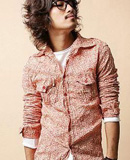不支持Flash
|
2006年Text 4
Many things make people think artists are weird and the weirdest may be this: artists only job is to explore emotions, and yet they choose to focus on the ones that feel bad.
This wasn’t always so. The earliest forms of art, like painting and music, are those best suited for expressing joy. But somewhere in the 19th century, more artists began seeing happiness as insipid, phony or, worst of all, boring as we went from Wordsworth’s daffodils to Baudelaire’s flowers of evil.
You could argue that art became more skeptical of happiness because modern times have seen such misery. But its not as if earlier times didn’t know perpetual war, disaster and the massacre of innocents. The reason, in fact, may be just the opposite: there is too much damn happiness in the world today.
After all, what is the one modern form of expression almost completely dedicated to depicting happiness? Advertising. The rise of anti-happy art almost exactly tracks the emergence of mass media, and with it, a commercial culture in which happiness is not just an ideal but an ideology.
People in earlier eras were surrounded by reminders of misery. They worked until exhausted, lived with few protections and died young. In the West, before mass communication and literacy, the most powerful mass medium was the church, which reminded worshippers that their souls were in peril and that they would someday be meat for worms. Given all this, they did not exactly need their art to be a bummer too.
特别说明:由于各方面情况的不断调整与变化,新浪网所提供的所有考试信息仅供参考,敬请考生以权威部门公布的正式信息为准。





